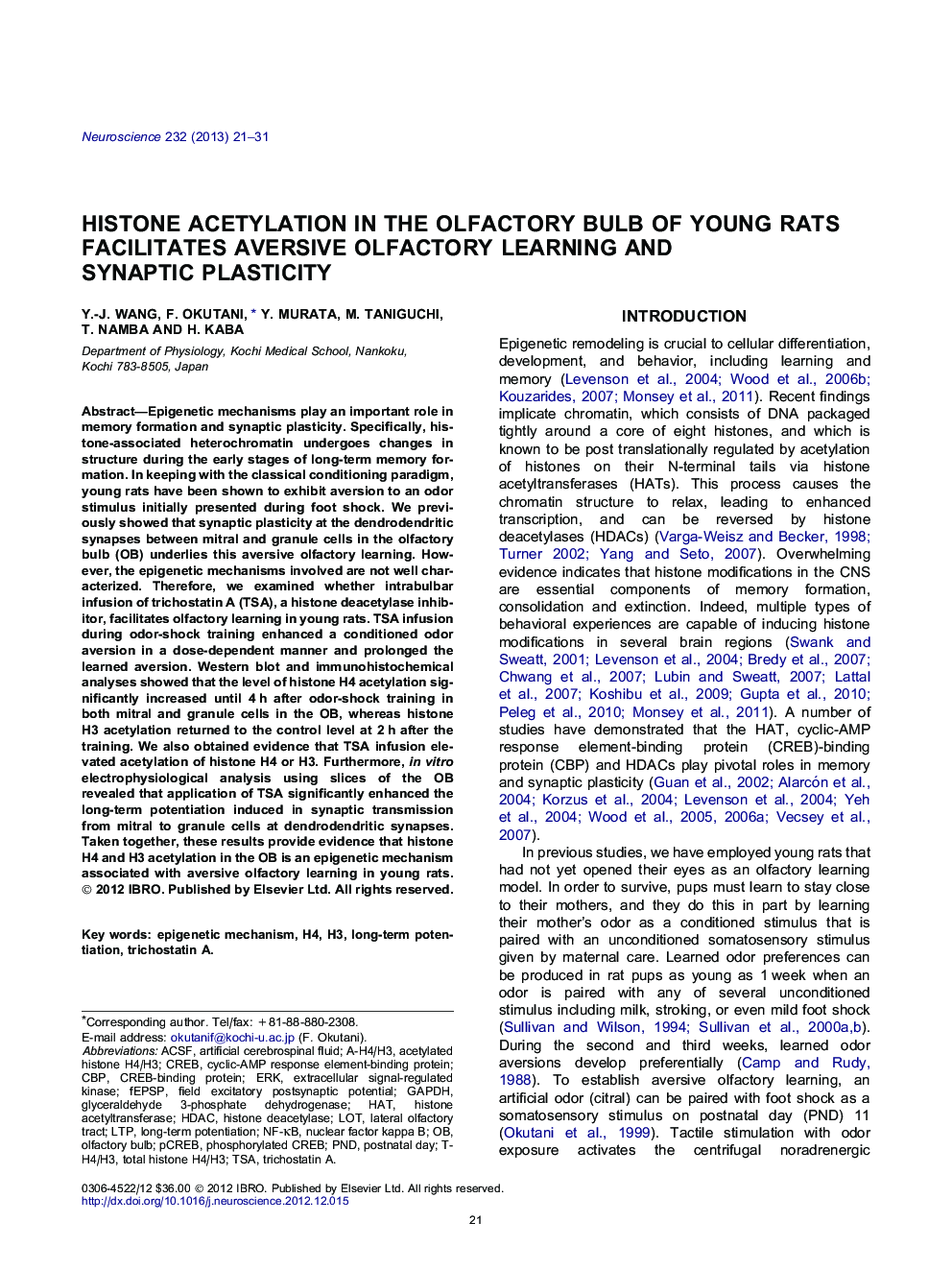| کد مقاله | کد نشریه | سال انتشار | مقاله انگلیسی | نسخه تمام متن |
|---|---|---|---|---|
| 4338102 | 1614844 | 2013 | 11 صفحه PDF | دانلود رایگان |

Epigenetic mechanisms play an important role in memory formation and synaptic plasticity. Specifically, histone-associated heterochromatin undergoes changes in structure during the early stages of long-term memory formation. In keeping with the classical conditioning paradigm, young rats have been shown to exhibit aversion to an odor stimulus initially presented during foot shock. We previously showed that synaptic plasticity at the dendrodendritic synapses between mitral and granule cells in the olfactory bulb (OB) underlies this aversive olfactory learning. However, the epigenetic mechanisms involved are not well characterized. Therefore, we examined whether intrabulbar infusion of trichostatin A (TSA), a histone deacetylase inhibitor, facilitates olfactory learning in young rats. TSA infusion during odor-shock training enhanced a conditioned odor aversion in a dose-dependent manner and prolonged the learned aversion. Western blot and immunohistochemical analyses showed that the level of histone H4 acetylation significantly increased until 4 h after odor-shock training in both mitral and granule cells in the OB, whereas histone H3 acetylation returned to the control level at 2 h after the training. We also obtained evidence that TSA infusion elevated acetylation of histone H4 or H3. Furthermore, in vitro electrophysiological analysis using slices of the OB revealed that application of TSA significantly enhanced the long-term potentiation induced in synaptic transmission from mitral to granule cells at dendrodendritic synapses. Taken together, these results provide evidence that histone H4 and H3 acetylation in the OB is an epigenetic mechanism associated with aversive olfactory learning in young rats.
► Young rats show an aversion to the odor that they have exposed with foot shock.
► Synaptic plasticity in the OB underlies this aversive olfactory learning.
► Infusion of TSA, a histone deacetylase inhibitor, facilitates olfactory learning.
► Increases of H4 and H3 acetylation in the OB correlates for learning.
► TSA has a facilitatory effect on the long-term potentiation induced in the OB.
Journal: Neuroscience - Volume 232, 1 March 2013, Pages 21–31